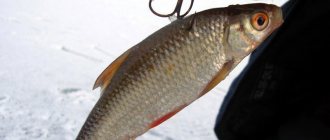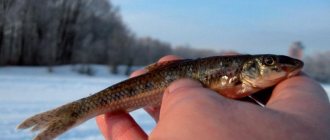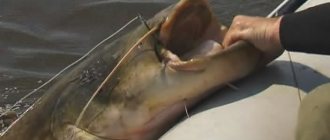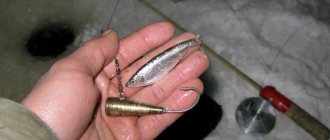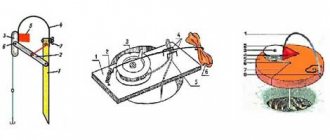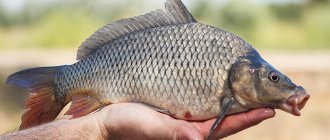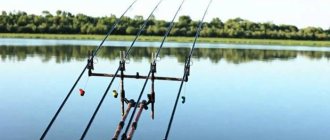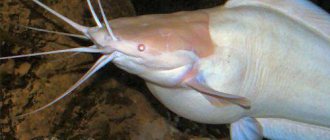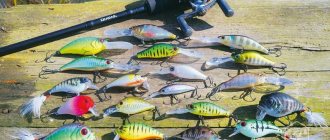Probably the most effective and “hunting” method of catching a predator is girders. This method is universal and can be used both in summer and winter. At the same time, you will be surprised how simple everything is, and the catch will not keep you waiting.
Its peculiarity is that the bait is a small live fish (also called live bait). At the same time, as in any business, there are some nuances, for example, winter girders differ from summer ones, and there are also several ways to attach live bait. And it will help you out if other fishing methods have not brought results.
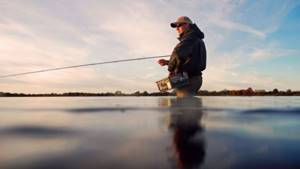
There are a lot of videos on how to attach live bait to a girder, but let’s start in order.
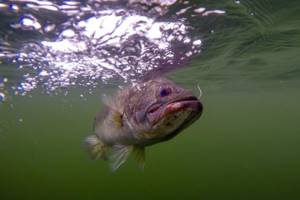
Types of girders
The main difference is related to the use in winter or summer, because one is caught in open water, and the other from ice. The designs are different, but the operating principle will be the same. summer and winter girders exist in various designs.
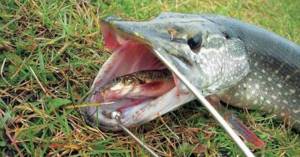
It all depends on the skill and imagination of the fisherman, as well as on the available means available in each specific case, with the main components:
- summer girders are a small spear with a fishing line, weight, leash and tee;
- The winter one is a reel with a flag on a spring, a fishing line, a sinker and a hook capable of hooking a predator.
Locations for installing vents

The summer perch is attached either to a strong tree, or to a rod or thick wooden stake driven into the bank. The winter pole is attached to a stick that lies across the hole. As for the surface vent, it is supported by the support provided by the base of the vent, which is not able to fit into the hole.
Winter bait, types, equipment, installation, bait bait
Predatory fish such as pike and pike perch prefer their favorite spots. Such places are considered:
- In places located in close proximity to the river bed.
- Promising places are considered to be areas where springs or underwater springs flow.
- In areas of the water area that are distinguished by complex terrain, where depressions and hills alternate.
- In places that are littered with rubble of trees or snags. Artificial obstacles should not be discounted either.
Summer zherlitsa
This type of fishing is suitable for predatory fish, not in very small rivers. Now it is not as popular as it was 30 years ago.
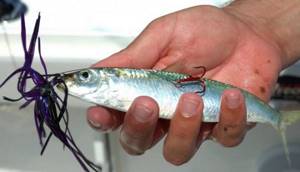
To make it, you usually need a wooden slingshot (other materials are also used), a fishing line is tied, which is then wound using the figure eight method.

At the end of the spear, a notch is made in which the free end of the line is clamped, a weight, a carabiner, a leash and a hook (preferably a double or tee) are tied to it.
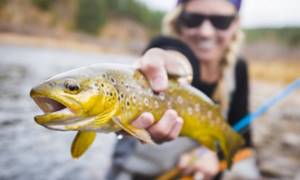
The sinker is selected with the expectation that the length of the line (the remaining end is at least 3 meters) will allow the bait fish to hide under water and be able to move freely.
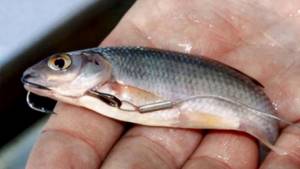
The principle of operation is this: with its movements, the baitfish provokes the predator to attack.
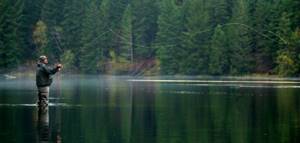
Having grabbed the bait, the predator pulls it along with it, the fishing line breaks out of the crevice and stretches for some distance behind the predator, then abruptly stops when the entire fishing line is unwound from the slingshot, and the predator itself is hooked.
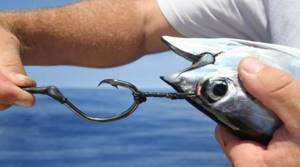
Their springy movements help the hook to sink deeper into the predator’s mouth and help it quickly reel in.

Where to put the vent
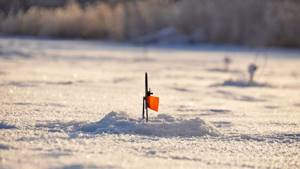
The cord on the summer version of the tackle must be hung either on an elastic branch above the place (most often these are willow branches) in which you plan to fish, or on a rod inserted into the ground.
An underwater winter trap is installed using a straight stick directly in the hole.
The surface-type model, used in winter, holds well on the hole itself with the help of a base.
Most often, predatory fish species (namely, they are caught on a girder) live:
- In recesses, closer to the river bed;
- Sometimes near springs or active underwater springs;
- In the pits of reservoirs or where there is uneven terrain with sharp changes;
- Near underwater objects such as large fallen trees, reeds or other vegetation;
Placing live bait behind the back
It is considered the most universal method. The advantages are that with this fishing method, the live bait remains in a horizontal position and continues to move naturally for a long time, without arousing suspicion from the predator.
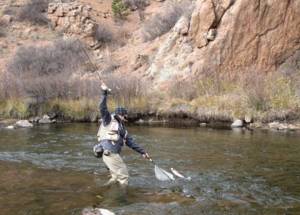
It's simple - pierce with one hook just above the spine and below the dorsal fin (in the middle of the fin's length). This method uses all sizes and types of hooks, the main thing is not to touch the spinal cord or spine of the bait fish.

How to cling correctly?
Baiting bait can be done in several ways , and each has its own tricks.
For one lip

The operation of placing live bait by the lip looks like this:
- The live bait is held in the palms of the hands.
- With the other hand, take the hook by the fore-end.
- They pierce the upper lip of the baitfish with the sting of the hook.
Expert opinion
Knipovich Nikolai Mikhailovich
Zoologist, hydrobiologist. I am interested in fishing at a professional level.
With this method of mounting, a single hook is most often used.
Through the gills
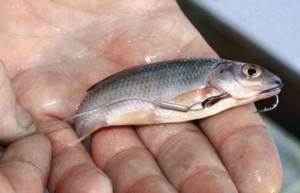
It is possible to insert live bait through the gills if the angler has certain skills. For this method, you cannot use any leashes. The leash must have a certain rigidity and have a loop at the end. Steel leashes made of string or vole or twisted wire are suitable for this method.
The bait fish on the hook must remain mobile. Therefore, when fishing with live bait baited through the gill cover and mouth, two-piece leashes are used.
There are two ways to properly hook live bait through the gill. The first is this:
- One end of the leash is tied to the main fishing line wound around the girder.
- The free end of the leash with a loop at its end is threaded under the gill and taken out through the mouth of the baitfish.
- A double is put on the loop.
- They drag the leash back so that only the hook sticks out of the baitfish’s mouth.
The second way is as follows:
- A fastener is attached to the end of the main line.
- At the end of the leash, a hook of any type is mounted: through a winding ring or in some other way.
- The free end of the leash is threaded into the fish's mouth and out through the gill. The leash is attached to the clasp.
Expert opinion
Knipovich Nikolai Mikhailovich
Zoologist, hydrobiologist. I am interested in fishing at a professional level.
However, leashes are only necessary when hunting pike and catfish. To catch other fish there is no need to install a leash, although a short fluorocarbon one will not be superfluous.
For both lips
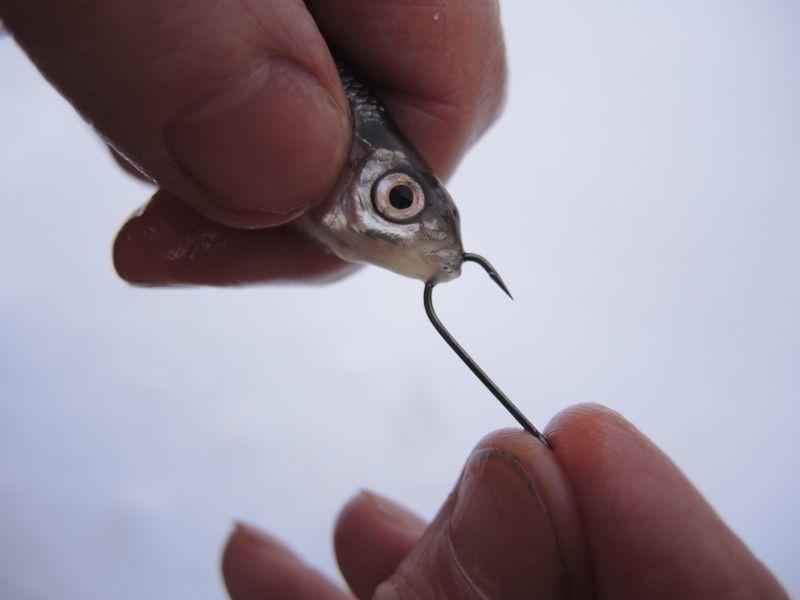
The bait is attached to both lips in exactly the same way as to one . The lower lip is pierced from the outside, and then the hook tip is pulled out through the upper lip. With the described method of baiting, live bait does not live so long, since it is not able to fully breathe.
Behind the nostrils
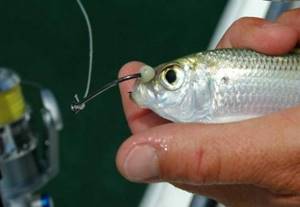
Installation by the nostril is carried out in the same way as by the lip, i.e. by piercing with a hook any nostril of the baitfish from the inside. A fish attached by the nostril holds tighter than one attached by the lip, since the nostril is located slightly further from the edge of the mouth.
Behind the back
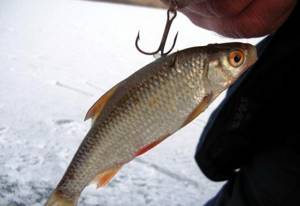
The method of attaching live bait to the back is very widespread, but even here you need to know about some subtleties.
- In particular, under no circumstances should the spine of the live bait be harmed, so the puncture is made directly under the dorsal fin or, much less frequently, below the spine.
- The second important condition is that the live bait must be positioned horizontally in the water.
- The position of the fish with its head up is considered unacceptable.
Expert opinion
Knipovich Nikolai Mikhailovich
Zoologist, hydrobiologist. I am interested in fishing at a professional level.
You can attach live bait behind the back using single, double and triple hooks.
By the tail
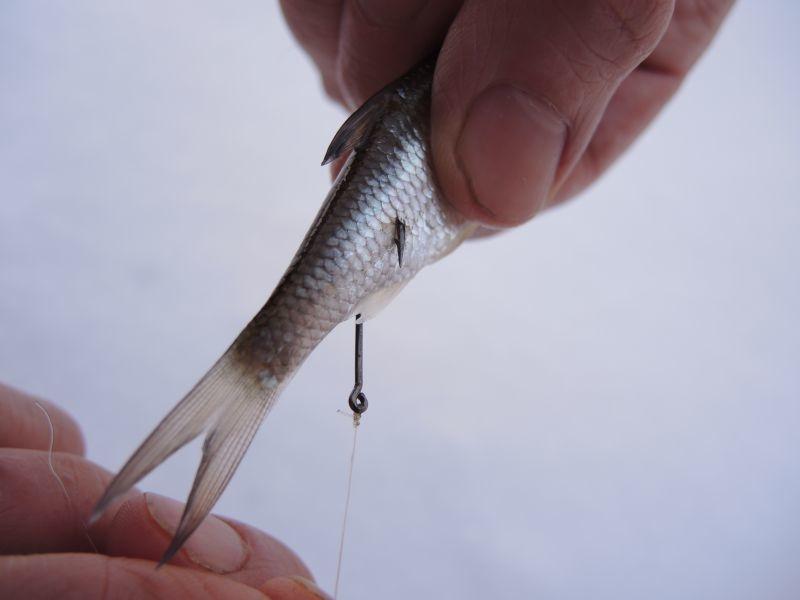
Placing a fish used as live bait by the tail differs from that by the back only in that the puncture is made closer to the caudal fin of the fish. Live bait baited in this way behaves more actively, thereby provoking the predator to bite.
Double puncture
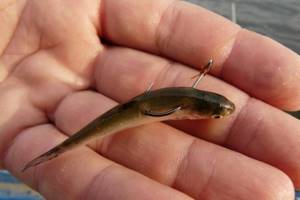
Placing live bait with a double puncture is used when it is necessary for the predator to be more reliably detected. This method is common when catching pike perch using sprat or dead bleak. Use a single hook. Live bait is attached like this:
- They pierce the back of the baitfish between the head and the dorsal fin.
- They take the sting out and make a puncture closer to the tail.
Tying
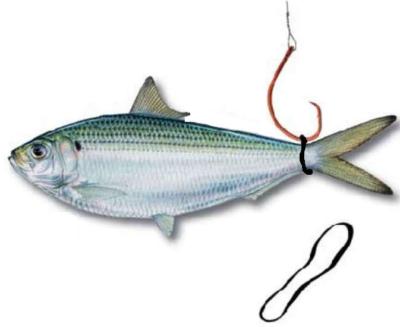
The tying method is used when they want to completely avoid injury to live bait. To do this, the live bait is tied with thread or an elastic band for banknotes and a hook is inserted under it.
Two hooks
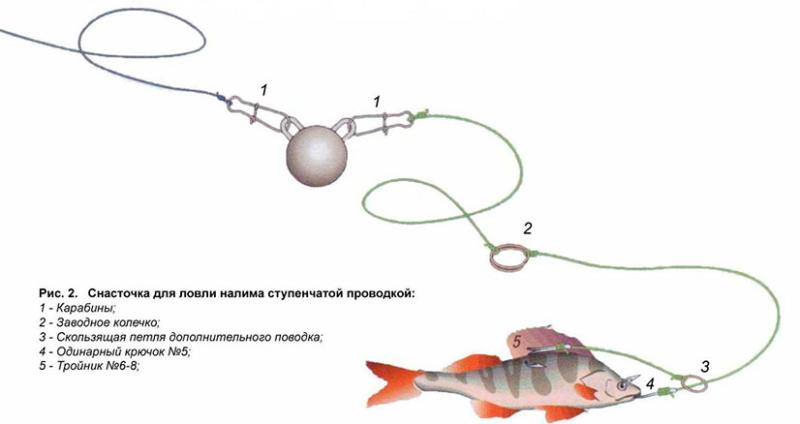
Two treble hooks are used when large live bait is used to catch predatory fish. An additional hook is placed on the leash. One hook is stuck into the back of the baitfish, the second is hooked onto its upper lip.
For fishing with girders, soft leashes are used , except in cases where they are used under the gill.
Expert opinion
Knipovich Nikolai Mikhailovich
Zoologist, hydrobiologist. I am interested in fishing at a professional level.
For such fishing, multi-strand metal leashes or leashes made of a special soft material are used, which can be used to tie fishing knots, and sometimes thick fluorocarbon is also used.
The latter has some rigidity, but the “invisibility” of the material makes up for this drawback.
How to attach a live bait to a baitfish by the lip
It is most convenient to attach small live baits by the lips (or one lip), while hooking them from below and upward, first by the lower lip, and then by the upper lip. It all depends on the strength of the current; if it’s strong, it’s placed on both lips, and if it’s weak, only on one.
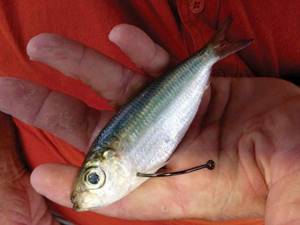
A predatory fish swallows it whole, so the hook will be inside the predator instantly. The larger the baitfish, the more likely it is to break off and injure the lip. With this method, the best option is a single hook.
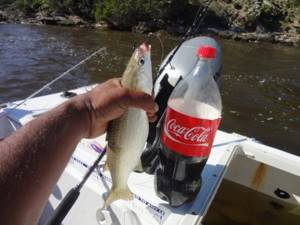
How to keep live bait alive?
There are two types of fry storage:
- Short-term storage during fishing and its preparation;
- Long-term storage.
To preserve the fish for a long time, it is necessary to create special conditions for them. It is difficult to store live bait in the summer. You can use a small aquarium using an aerator and be sure to periodically change the water frequently. Various containers are used and placed in the refrigerator. Everything is easier in winter. It is enough to install a closed container, insulated with foam plastic, on the balcony. The use of an aerator is also mandatory.
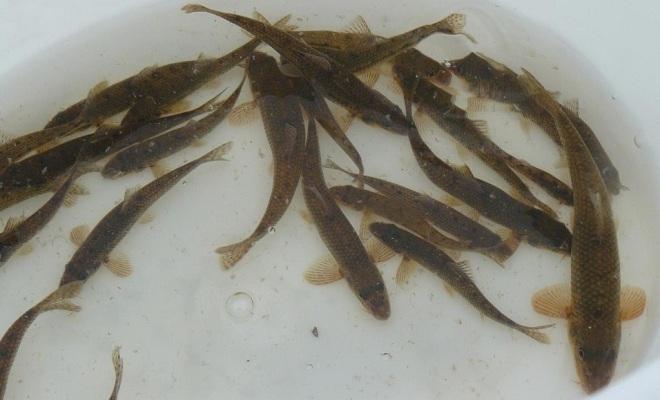
The fish should not be fed and temperature changes should not be allowed. You can't keep too many fish in one container. Dead fish must be removed from the container immediately. You cannot keep ruffes in the same container with other fish.
For delivery to a reservoir, special containers designed specifically for this purpose are used, although some use the most ordinary bucket. This is quite suitable for crucian carp. When fishing, fish are stored in special fishing buckets (cannas) with constant water changes. You can keep live bait in a small mesh cage.
Despite its simplicity, the zherlitsa has its secrets. The choice of baiting method plays a primary role when fishing with girders both in summer and winter. Knowing all the intricacies of baiting, you can successfully catch almost all bites of predatory fish and remain with the catch even when the predator is the most capricious and picky.
Tail impaling
The technique is comparable to hooking onto a ridge; its movements are not limited; the baitfish remains active for a long period, while being pierced in the upper part.
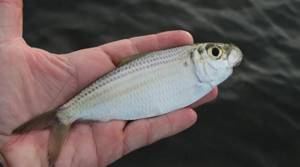
This method is based on the characteristics of the predator attack - from behind. In this case, the hook immediately ends up deep inside the predator and there is no chance of breaking off at all.
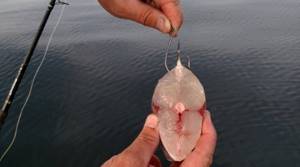
When and how to use bait bait options?
The choice should be made in accordance with a complex of various factors: what kind of predator is being hunted, its activity and characteristics, time of fishing, and others.
To catch perch or pike perch, they usually use a back mount. Pike requires a different approach, since it rather sluggishly attacks live bait, grabbing it by the tail. In this case, you need to place live bait under the gills. If a predator begins to swallow its prey, it has virtually no chance of salvation. This mount is also suitable for overly active and aggressive pike. Night fishing, girders located far from the angler - hanging live bait by the gills will be the best option.
However, this method is not suitable for all types of live bait. Pricking by the gills is ideal for crucian carp and roach, but it is not at all suitable for bitterling or bleak. Small fish, unlike others, do not tolerate fastening well and quickly fall asleep.
How and when to use different attachment methods
In fact, there is no absolutely universal method, and before attaching the bait, it is necessary to take into account all the conditions: depth, current, thickets, hook size, time of year and day.
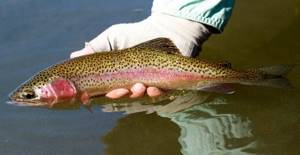
The type of predator is of no small importance: for catching pike-perch and perch, it is better to bait it by the ridge; for pike, the best option is by the gills.

And wide species of fish used as live bait (for example, roach or crucian carp) are best fished for their gills. Ruff or perch are caught by the lips, they are strong, and even if the current is strong, they can break off when bitten by a predator.
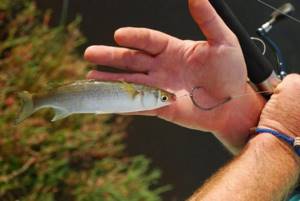
Varieties of girders
- Flat base. The disk vent floats on water or is installed on ice;
- Kaganok. Vertical vent with reel;
- Vertical stand. The zherlitsa is stuck into snow or ice.
Summer zherlitsa
- Postavukhi. Live bait is hooked and thrown into the water. The second end of the tackle is secured on the shore (by a peg or hook). The trick: to prevent the fish from leaving, you need to make 1.5 - 2 meters of free line;
- Hanging. A wooden slingshot with a cord is suspended from a tree or stick above the water. The live bait is lowered into the water along with the sinker. When biting, the slingshot will begin to relax the line;
- With a reel. A peg with a rope is driven into the shore, the tackle with live bait is thrown into the water. When biting, the coil will begin to unwind, releasing the signaling flag;
- Floating. A round flat float is made, onto which a flag is attached, on the opposite side of the fishing line with live bait. A fishing line is attached to the edge of the float, which will be controlled by the fisherman from the shore. In order for the fish to move better to the girder, fishermen recommend securing grass along the edges of the circle.
Let's celebrate! All types of summer girders can be made with your own hands; the main condition will be a sufficient amount of fishing line. If the predator feels that the prey is not doing well, it will immediately release it.
Winter zherlitsa
- Postavukhi. The structure can stand all winter. Its main principle: the bait with live bait is located in a hole under water. To check or get the catch, you need to drill another hole nearby and pick up the girder with a hook. Trophies are pulled out through a new hole;
- Plates. Budget option for winter fishing. The basic principle: the “plates” completely cover the hole and then signal the catch. The main disadvantage of this design is that fish are caught from under the “plates”;
- Homemade. A wire spool is attached to a wooden rod. When it freezes, the structure can be covered with snow, which will prevent the hole from freezing.
- Rack. The pointed end of the girder is stuck into the snow, and a signaling flag is installed on the opposite side. In the middle of the structure is a reel with a fastening mechanism;
- Tripod. The principle is the same: the reel and line are between the legs, and the flag is on the top;
- Load-bearing base. Homemade wooden plates on which legs and a flag are installed. The legs can be made to any position, it all depends on the preferences of the fisherman. The main advantage of such girders is the complete closure of the holes.
Good to know! In winter, fishermen are advised to use girders that can completely cover the hole. This will help reduce the time when searching for the girder and will guarantee that the fish will not “slip off”. It is also worth purchasing bright flags in advance and additionally gluing them so that sharp gusts of wind do not tear them off.
Photo tips on how to place live bait on a girder
Read here Folding chair for winter fishing - tips on choosing equipment and the main nuances of using a folding chair for winter fishing (125 photos + video)
Help the project, share on social networks 

0
Pike hooks for live bait
Very often, anglers have disputes about which hook is most suitable for fishing with live bait. Each person usually has their own arguments in favor of a particular model.
Which pike hook for live bait should you choose?
When choosing, you should adhere to the following rules:
- Forged tees (doubles) are best suited for predators, which is pike;
- the size of the hook must correspond to both the size of the live bait and the size of the intended fish that you want to catch;
- twin hooks significantly reduce the number of idle bites;
- the sting must be sharp;
- the wire at the hooks must be hardened. Under high loads, a high-quality hook can bend but not break.
The choice of method for placing live bait on a hook when fishing for pike directly must be made based on factors such as the type of reservoir, the presence of a current in it, the size of the predator, the type of hook, professionalism, etc. If you take into account all these features, you can ensure yourself a really good catch.
Views: 1,560
Similar articles:
- Fishing for pike with live bait in winter: which is better? Pike is a dangerous underwater predator that can destroy...
- Catching pike with live bait on a float rod Despite all its antiquity, fishing for pike with live bait...
- Offset hook: types, sizes, selection, installation The success of any fishing depends not only on the skills of a skilled fisherman...
- Equipment for silicone baits. How to attach silicone bait to a hook. Silicone baits are artificial baits for catching fish that...
Choosing live bait for winter pike
What is the best live bait for pike on the girders in winter? The toothy robber is voracious; she needs to feed all winter to survive. Developing eggs and milt require large amounts of nutrients for spring spawning.
Types of fish
Pike is omnivorous; in its natural environment it can eat everything that moves - any species of fish, insects, frogs, small birds and mammals in the water. In winter, its diet mainly consists of fish from the school with which it stays. The most common fish populations in our reservoirs are roach and perch. From this point of view, these breeds are the best live bait for pike in winter. They can be caught in the same places where predators are caught. True, this is not always possible. And the presence of a sufficient amount of live bait is necessary for bait fishing. Finding and preparing live bait is generally a headache for the garrison. Before you go fishing, you need to take care of solving this issue.
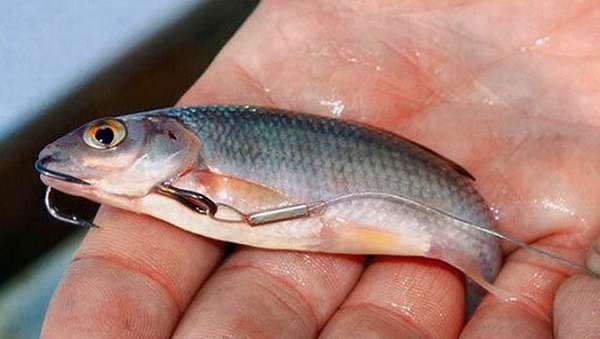
So which live bait is best to catch pike in winter? The ideal option is perch or roach caught from the same reservoir where the predator fishing will take place. But in the absence of this, any type of fish of sufficient size will do. The easiest option is to buy crucian carp at a fishing store. They are sold almost everywhere in winter, along with bloodworms. Minnow, rudd, bleak - everything is suitable. Even rotan is also suitable as live bait for pike in winter, but only where firebrands are found.
But sometimes pike are capricious. If you are sure that there is a toothy fish in a particular place, but it does not take the purchased crucian carp in any way, then first of all you need to think about changing the bait. If you manage to catch at least one, you need to rip open its belly and see what’s in its stomach. Pike almost always have remnants of eaten fish in their stomach. Most likely it will be roach or perch. Naturally, in this situation, you need to pick up a fishing rod with a jig or a spider spider and catch this particular live bait somewhere nearby.
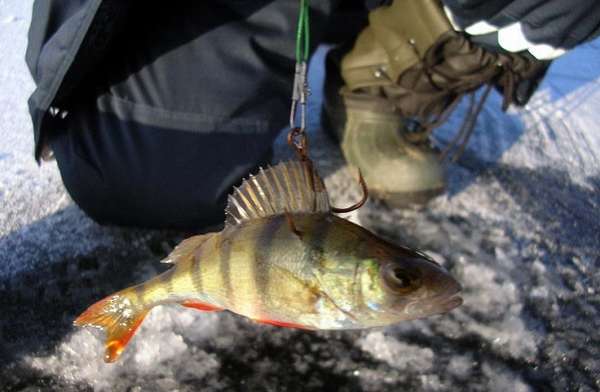
Size
The size of live bait for pike in winter matters. A fry that is too small will most likely attract perch. Therefore, to catch toothy fish you will need relatively large live bait - roach, perches or brushes the size of a finger or slightly larger. It is difficult to catch such fish with a spider. Most likely, for catching live bait, you will need to allocate a separate fishing trip with a fishing rod, precisely for the purpose of preparing bait. A very small fry will most likely be pecked by a small pike. If an angler is hunting for a really large pike, 2-3 kg or more, then you will need the appropriate bait - roach, perch or crucian carp 100-150 grams or more.
Closer to spring, pike prefers smaller fish. It is believed that this is due to an increase in egg size closer to spawning. It is simply difficult for a predator to push large prey through the digestive tract. A fry that is too small will, again, attract small fish. Therefore, the golden mean is fish the size of an adult’s finger; smaller ones are not needed.

Extraction and storage
There are several ways to get such bait for pike in winter:
- Catch in advance in the fall and store at home (in a basin, aquarium, etc.) Crucian carp or bitterling are best suited for this due to their high vitality. But if you try, you can store roach and perch for a long time. Verkhovka and bleak minnows are excellent live bait, but storing them for more than 2-3 days most likely will not work. For long-term storage in a container, you need a sufficient volume of water, absence of crowding, the required level of oxygen and low temperature (+4, +7 degrees). Every two days the water needs to be changed to fresh water at the same temperature. It’s good if you have an aquarium compressor - using it in a basin with live bait will significantly increase the fish’s chances of survival. If you get confused, you can store live bait for pike in winter in this way for several months. If you have constant access to a nearby body of water, good. Then it is better to store this strategic reserve in a cage in this reservoir, periodically checking and removing dead individuals (suitable for rural areas).
- Buy in store. Most often you can find crucian carp on sale. Occasionally a roach is also found.
- Catch just before or during bait fishing.
- Squeeze peaceful fish from a friend or neighboring anglers.
- Take your wife (son, brother) fishing and set them up to catch live bait, while you do the placement of the poles yourself. It works only if three conditions are met: they don’t mind, they also know how to fish with a winter fishing rod, and the fry actually bites.
Directly for fishing, live bait should be taken in a special can or thermos to protect it from temperature changes and freezing. In general, any temperature changes during storage of live bait, transportation or fishing can kill the fish.
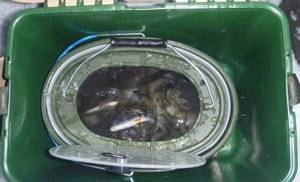
How to catch a loach in summer
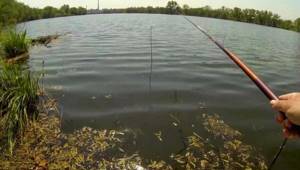
However, for some reason, the fish caught on the hook very rarely goes past the cage. The most promising place for successful fishing (be it a lake, pond or river) is considered to be the border of clean water and vegetation. It can be: thickets of reeds, water lilies, lilies or bushes.
The fishing tactics are quite simple:
- Classic casting;
- Slow wiring;
- Sweeping;
- Fishing.
Recommended reading: Perch fish
The nature of the loach's bite is predictable. This is reflected on the float as follows: several oscillatory movements and a sharp withdrawal of the equipment to depth at an obtuse angle. It's time to cut. She should not be impulsive, but confident.
On a note! The gluttony of the mini eel is surprising. Seeing the bait, the fish loses caution and can peck until there is no bare hook left. As a result, there are practically no gatherings here.
We choose a fishing rod depending on the fishing location. For fishing from the shore, the optimal length would be 2.2-2.6 m. The only reason to use longer gear is if there is abundant vegetation.
When fishing from the side of a boat or inflatable boat, 1.5-1.8 meters will be enough.
Note! When there is a sharp change in atmospheric pressure and the approach of bad weather, the loaches rise to the surface. Among fishermen, they are called “living barometers” for this quality.
Winter jig fishing
The whole process of fishing with ice lures consists of many nuances. In different conditions, you need to use appropriate tactics and fishing techniques with girders. The method of attaching live bait to the bait also depends on the fishing method, the equipment of the flag, and the type of predator being hunted. In the middle of nowhere, experimenting with the size, type of baitfish and its placement is an important part of finding a working way to rig girders.
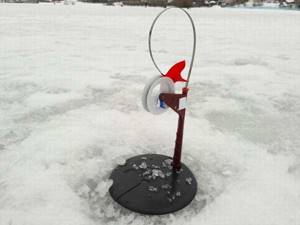
The best winter bait for pike perch
To catch pike perch with its small mouth cavity, it is better to fill a winter bait with live bait that has a narrow body.
The dace shown in the picture, along with small ide and gudgeon, are some of the best live bait for catching pike perch with girders, if you manage to get hold of representatives of these fish species in the winter season.
But, if you get on a school of pike perch in the flow of a large river, then the best live bait may be sprat, capelin, anchovy or sprat. In the evening, unsalted fish is transferred from the freezer to the refrigerator.
In the morning of winter fishing, you can install 2-3 gear on the ice. True, to catch pike perch on the river flow you have to set up winter fishing rods with vertical rigs and good weight lead jigs. So, even if you want to, the gear cannot be called winter girders.
Yes, and thawed dead fish, which in the current can easily replace live small roach and verkhovka, are not exactly live bait, but you can’t explain this to a voracious pike perch.
By the way, don’t forget to put limit bars on fishing rods with nod rigs. Otherwise, catching pike perch with live bait can turn into too expensive winter fishing with gear diving under the ice.
Winter fishing

The year-round activity of the silt dweller leaves a good chance of catching it not only in summer. Significant migration of this fish is not observed in winter. This means that holes drilled over silted areas of the bottom are almost a guarantee of catching a distant relative of the eel.
Catching loach in winter from an ice hole is similar to summer fishing, both in tactics and equipment. Fishing in the current will most likely prompt you to abandon the float, which will force you to increase your concentration on the hole.
In addition to traditional fishing methods, in some regions there are folk methods passed on by fishermen from generation to generation.
One of them is stake fishing. Its essence is as follows:
- Choose 8-10 young poles one and a half meters long. One edge is sharpened so that it can be driven (stuck) into the muddy bottom.
- At a height of approximately 60-70 cm from the bottom, cuts are made into strips of bark with a knife and separated from the wood. It should look like a Christmas tree with “paws”.
- Muddy shallow water with a depth of no more than a meter is selected. Holes with a diameter of 100-120 mm are drilled. The poles are stuck into the ground and left there for several hours (optimally from evening to morning).
- After 5-6 hours you will get a tackle on which from three to five fish will hang.
We recommend reading: Winter fishing for bream with a jig
From ice to trap
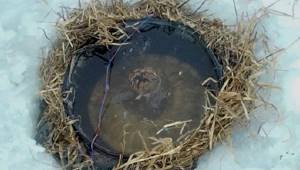
For exotic lovers, this type of fishing is what they need. The technology and equipment are simple. You will need a container measuring 50 cm by 40 cm or more. A basket, wooden box, metal basin, bucket or something similar is quite suitable for this. The main condition is the absence of a bottom. Either a cloth (or plastic) bag is placed inside. The edges are turned outward, and a pipe with a diameter of 3-4 cm is attached through the hole in the lower part. This will be the entrance hole for the fish. The pipe must be secured so that its upper edge protrudes 8-10 cm above the bottom of the bag.
The device is installed in the hole in such a way that the upper edge of the pipe is recessed by 5-10 cm. Several branches are laid above the trap and covered with straw, reeds, fallen leaves and snow. The wait for the first “harvest” can last from several hours to one or two days.
On a note! A simple attachment in the form of one or two sticks and a cord tied to the upper edge of the device will help keep the tricky tackle near the ice.
Logically, the fish should rush to a source of fresh air, enter the trap through the pipe and remain in it due to the impossibility of leaving it through a piece of tube protruding above the bottom.
The method is simple, there are no problems with installation. It works flawlessly to this day.
Oxygen bait

In addition to natural bait for ice fishing, the popularity of synthesized compounds that imitate an oxygen source is growing.
Release forms: pressed capsules (tablets) or dry mixture. In the second case, the fisherman himself regulates the size and density of the lumps. By the way, when fishing for bindweed in winter, this bait shows good results.
